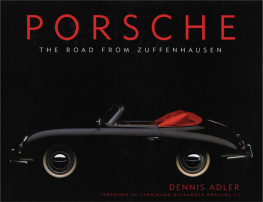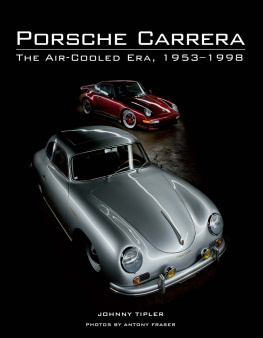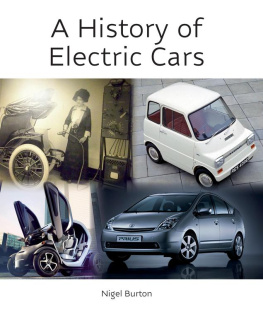


GUI BERNARDES

THE CROWOOD PRESS
First published in 2017 by
The Crowood Press Ltd
Ramsbury, Marlborough
Wiltshire SN8 2HR
www.crowood.com
This e-book first published in 2017
Gui Bernardes 2017
All rights reserved. This e-book is copyright material and must not be copied, reproduced, transferred, distributed, leased, licensed or publicly performed or used in any way except as specifically permitted in writing by the publishers, as allowed under the terms and conditions under which it was purchased or as strictly permitted by applicable copyright law. Any unauthorised distribution or use of this text may be a direct infringement of the authors and publishers rights, and those responsible may be liable in law accordingly.
British Library Cataloguing-in-Publication Data
A catalogue record for this book is available from the British Library.
ISBN 978 1 78500 321 9
Photographic acknowledgements
All photographs are from the Porsche Archives, apart from the following:
Gui Bernardes: pages
Jorge Bernardes: pages
Franco Lini (The GP Library):
Jeff Zwart:
Rupert Berrington:
David Colman:
CONTENTS
DEDICATION
To my grandson Toms, who is a dear autistic 10-year-old boy, hoping that one day he can read and understand this book about the cars he already recognizes and admires.
ACKNOWLEDGEMENTS
When I decided to write a book about Porsche, I was conscious that I would have to walk a long way and overcome the normal difficulties for anyone who is doing it for the first time.
I knew that I would need some help in different areas, but I was certain that the passion I have for the brand and the will to make this dream come true would certainly open some doors.
So I want to thank all those who in one way or another opened those doors for me: friends and Porsche enthusiasts who encouraged me to go on with my plans, when I had so many doubts in my mind; and mainly the Porsche Historical Archive in the persons of Jens Torner and Dieter Landenberger, who kindly gave me access to relevant information and provided most of the photos for the book.
Gui Bernardes
CHAPTER ONE
LOOKING FOR PORSCHE DNA ORIGINS
19 JANUARY 2014, BRUSSELS, BELGIUM
It is not particularly cold on that Sunday morning when I approach Autoworlds building in Brussels, but the excitement of being about to see and touch some of the wonders created by Ferdinand Porsche and his successors almost makes me tremble with emotion as I cross the doorway crowned by the four Ferdinands. Having bought the ticket, I climb the metallic staircase that accesses the first floor where the expo is happening and what I see at a first glance confirms that the 1,250-mile (2,000km) trip that brought me here was well worth it. In a simple, but very well-achieved scenario, under soft and warm lighting, one can see a few dozen vehicles, which, for a lover of the Porsche brand, represent all of its history of genius, innovation, perseverance, style and success in automobile industry and motor sport.
The expo is divided into four zones, each one dedicated to its own Ferdinand. In the space pertaining to the founder, one can see magnificent examples of his technical expertise, in the diverse marques in which he worked before founding Porsche, such as a Lohner Mixte Hybrid model from 1901. This was the first hybrid car, with electrical engines on the front wheels powered by an electrical generator, which was in turn moved by a combustion engine.
There is a shining Austro-Daimler Prinz Heinrich model from 1910, in its immaculate white, which dominated the race for which it had been specially conceived, conquering the first three positions, with the victorious one being driven by Ferdinand Porsche himself.
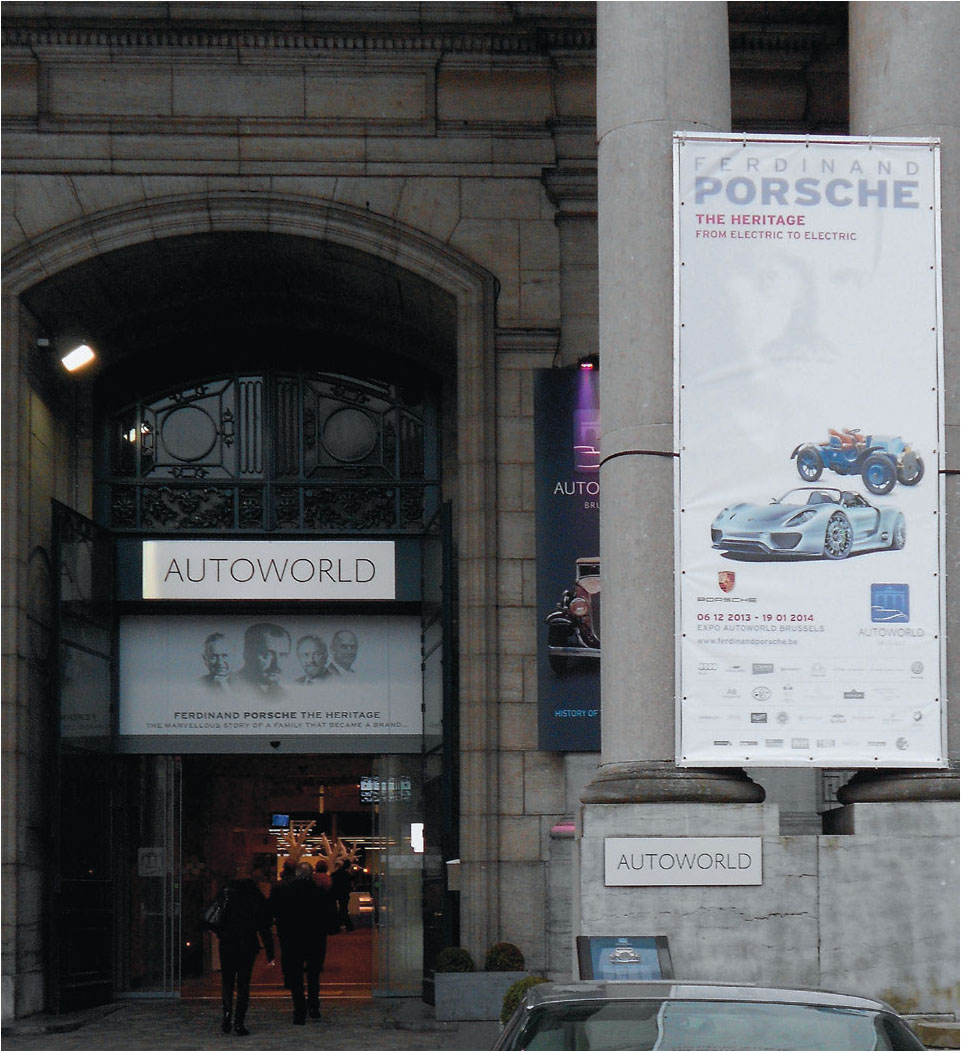
Autoworld main entrance with posters announcing the exhibition.
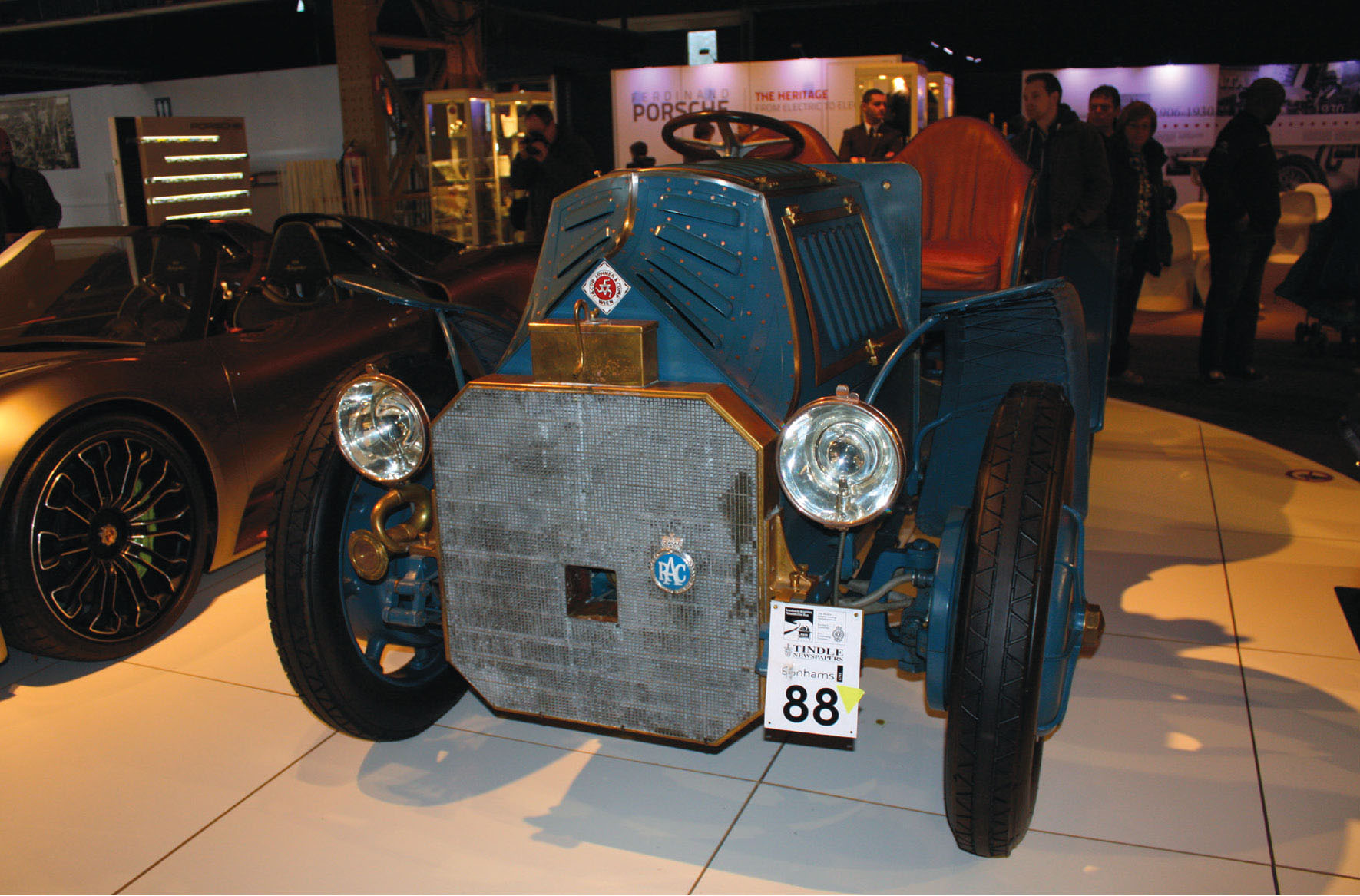
Lohner-Porsche Mixte Hybrid (1901).
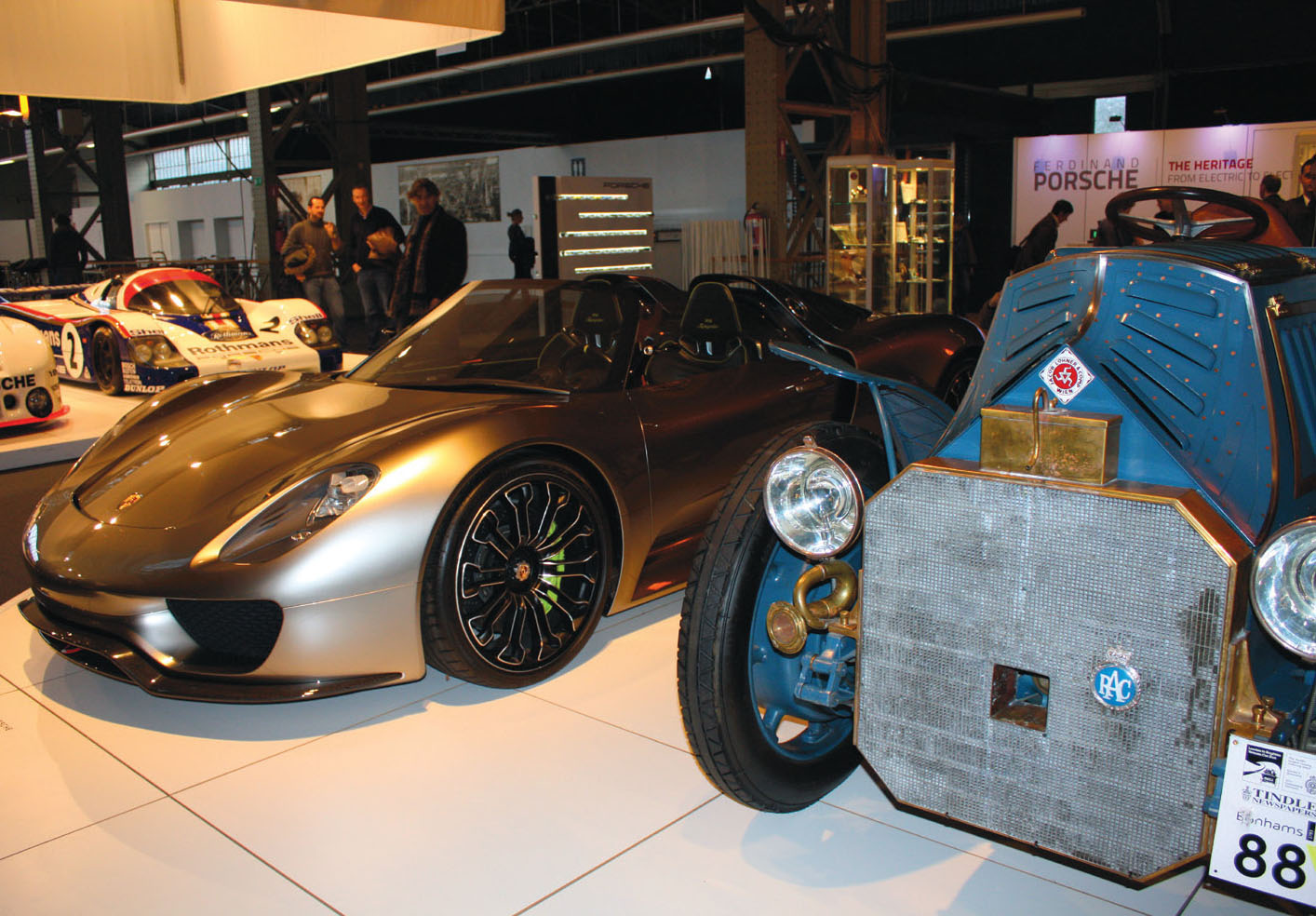
From Electric to Electric. More than an hundred years separate the Porsche 918 from its hybrid ancestor.
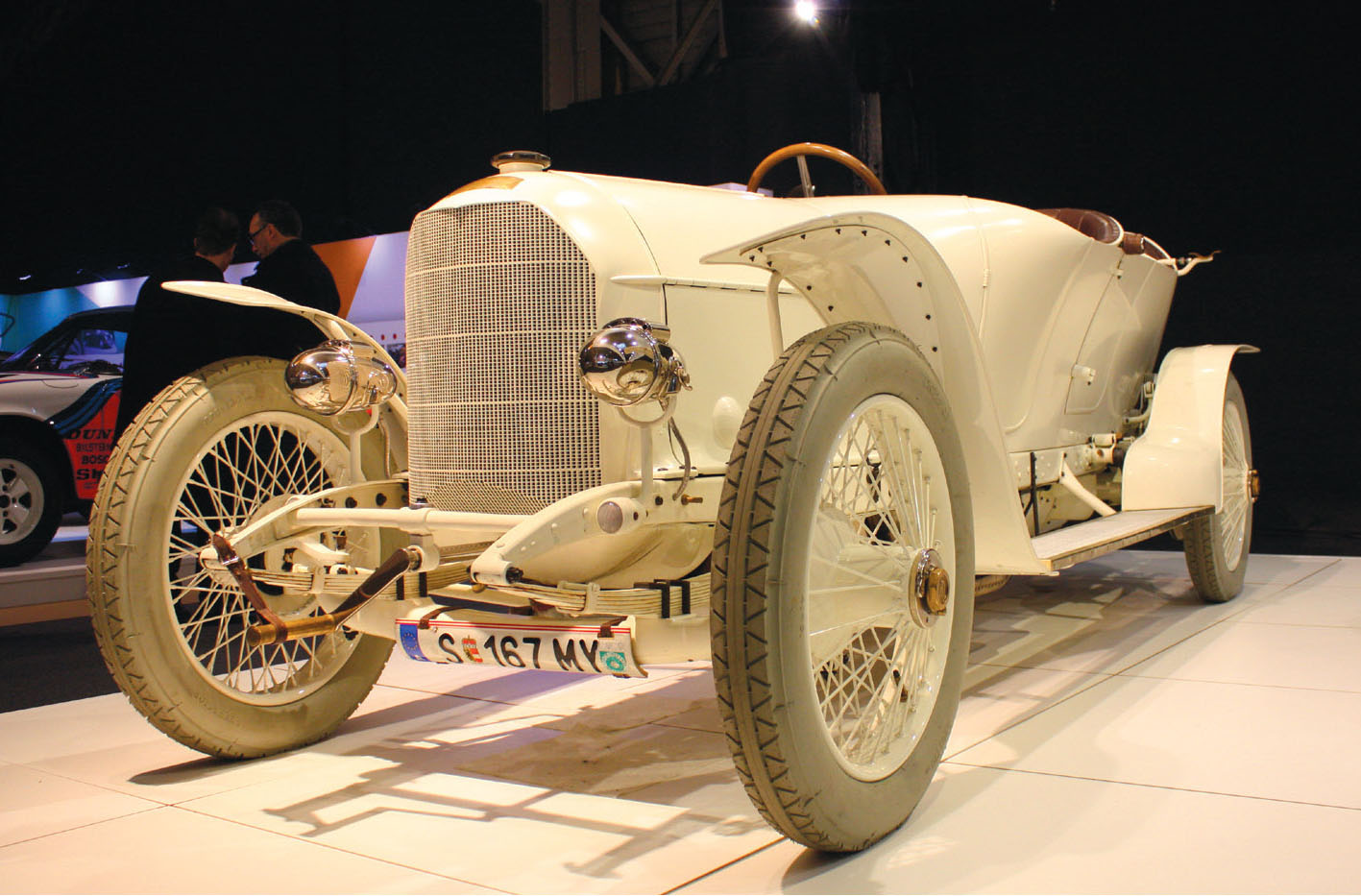
Austro-Daimler Prinz Heinrich (1910).
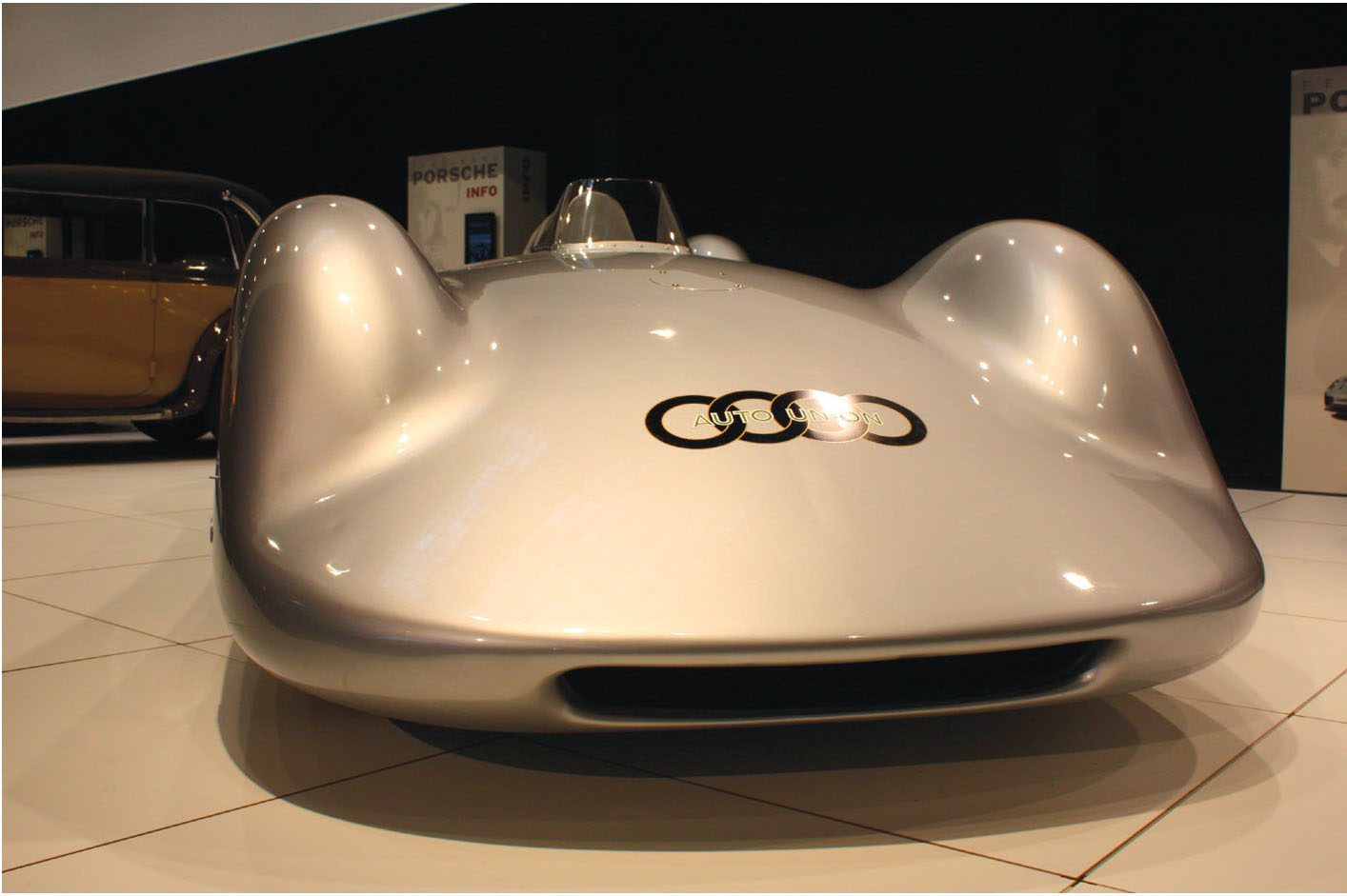
Auto Union V16 Stromlinienwagen (1937).
Also on show is a fantastic Auto Union V16 Stromlinienwagen from 1937, a record-holding vehicle, which, with its aerodynamic lines and propelled by its enormous engine, sped up to 250mph (400km/h).
Several other interesting cars, like the famous KDF (Volkswagen), representing the innovative ideas and technical boldness of their creator, could be admired in this space, but it is not to them that I walk first. I want to see and contemplate immediately the one that was the first to embody what we call today the Porsche DNA. I look around and there it is, with its unmistakable silhouette and rounded shapes, not too thin but elegant, with a plunging hood between two outstanding headlights (like eyes peering at the roads from Berlin to Rome, the race for which it had been designed and built). It has a narrow and rounded cockpit, the better to slice through the air, and an accompanying unique profile of rear windows and descending aft section, all made up of smooth curves, with a lightness and at the same time a breathtaking dynamic.
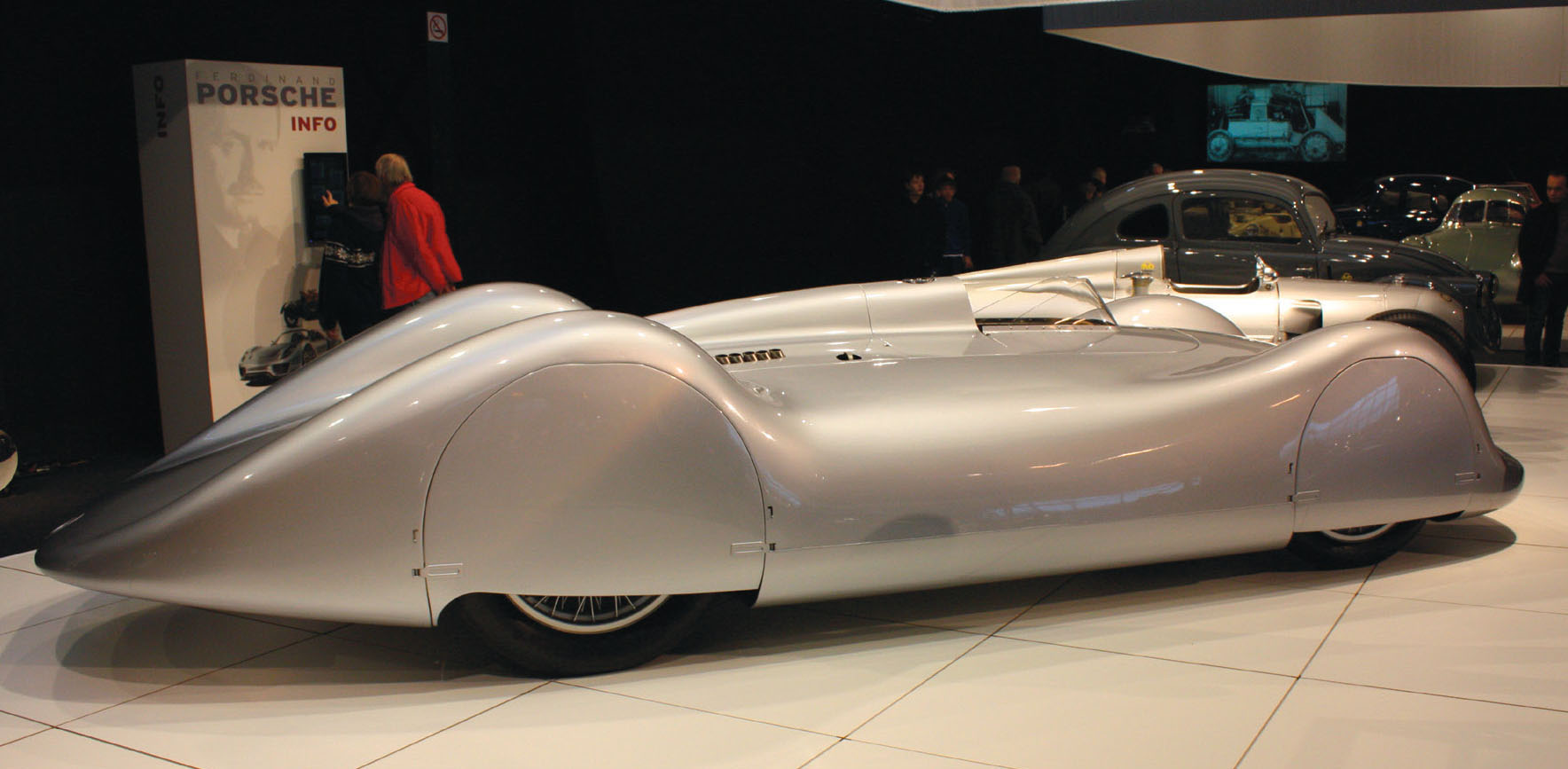
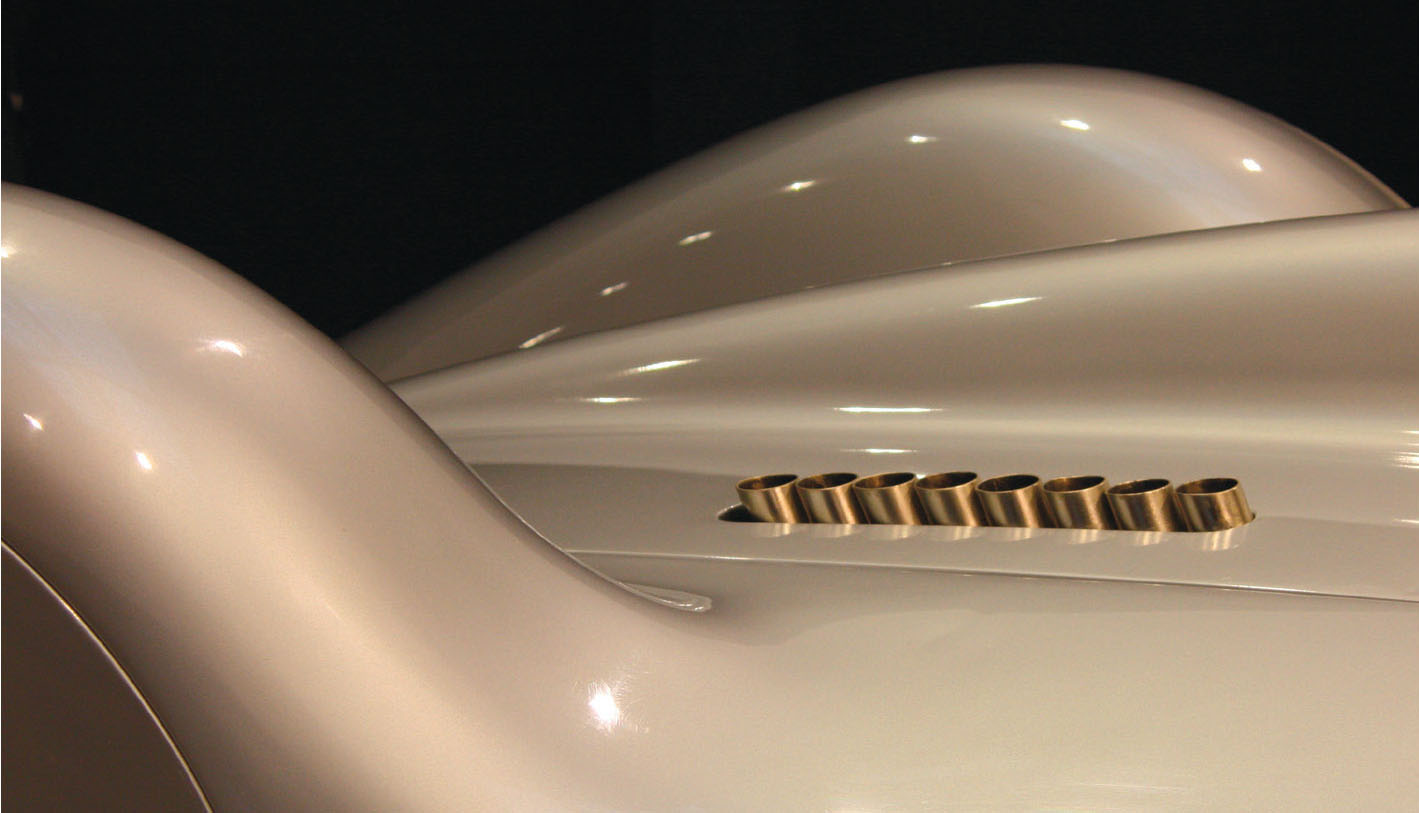
Auto Union V16 Stromlinienwagen (1937).
I approach, enjoying the moment, while confirming the smoothness and beauty of its lines. I calmly pace around the mechanical sculpture so as to admire it fully. Its imperfect paint job, the rust that has taken over the rims of the headlights and the worn-out interior do not detract from its value. In fact, they are witness to the many miles driven over more than seventy years.
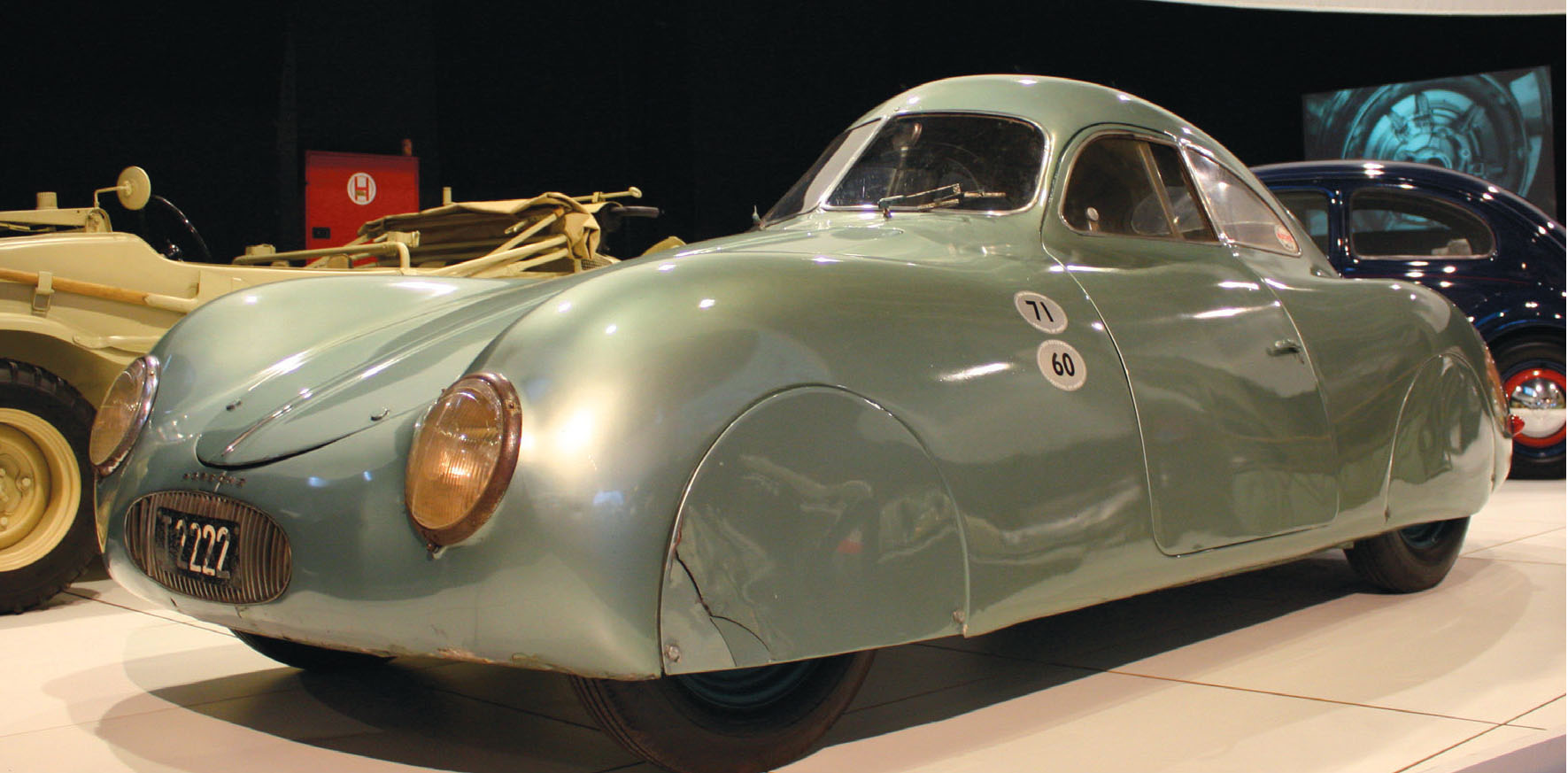
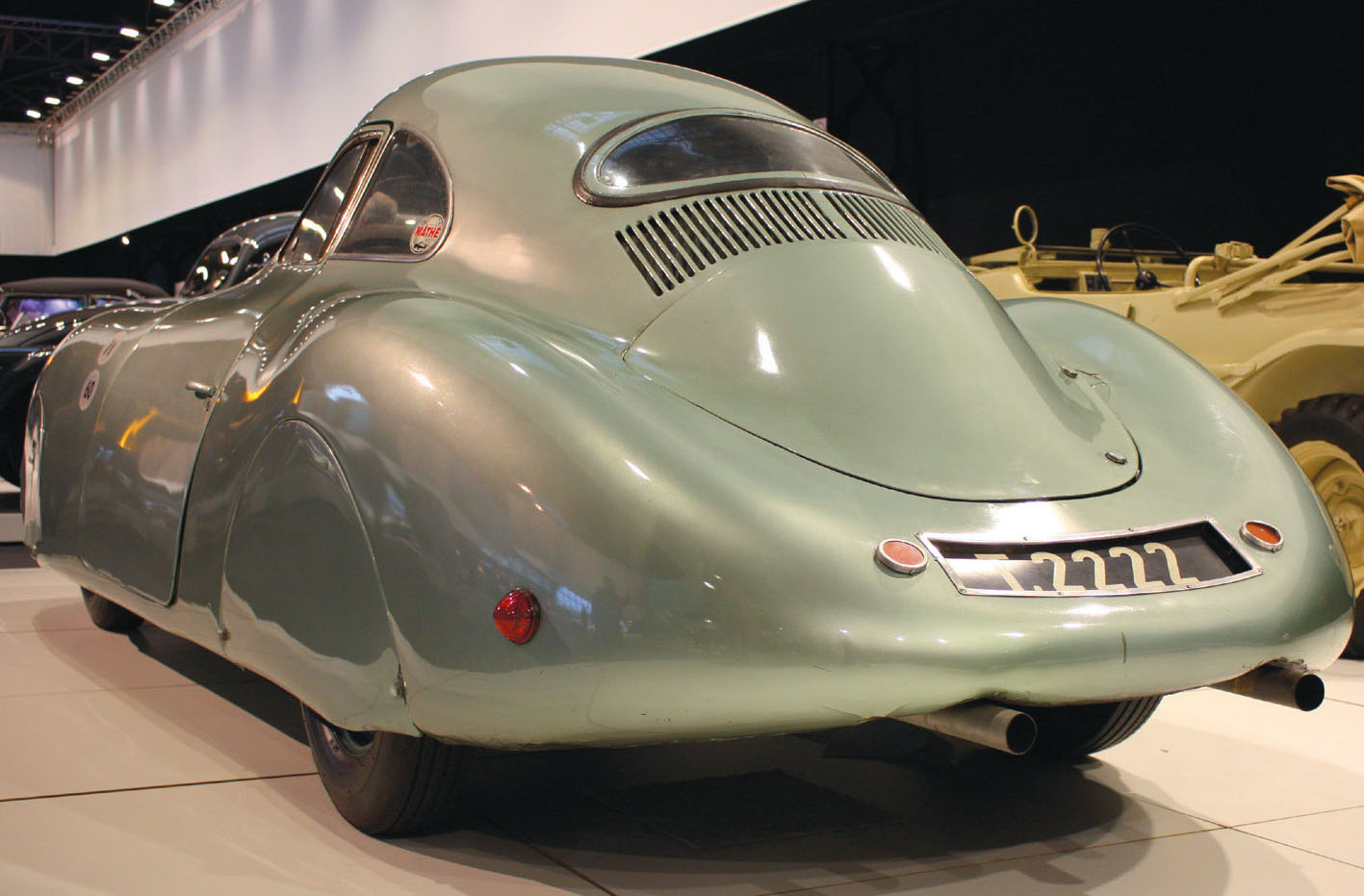
Porsche 60K10 at Autoworld.
If the 60K10 could speak, what fabulous tales it would have to tell! The impulse to touch and run my hand along that elegant shape is irresistible, and my hand rests softly over the metal in that emotion-filled moment a vibrating wave runs up my arm, like an electric shock, and though its not uncomfortable, I feel dizzy all the cars at the expo rotate around me in an inebriating ballet and all of a sudden I feel as if Im in another time, another space, another dimension
Next page
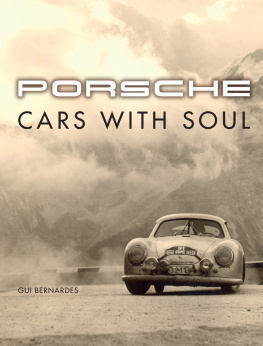

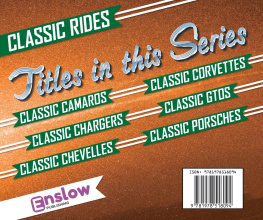
![Trade Trade - Porsche 356 owners workshop manual: [1957-1965]](/uploads/posts/book/237774/thumbs/trade-trade-porsche-356-owners-workshop-manual.jpg)
